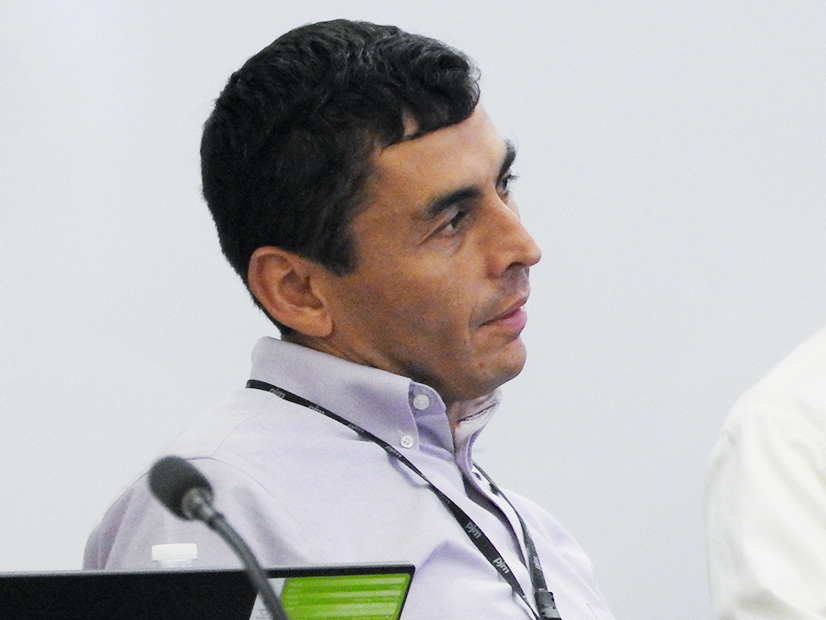Stakeholders Endorse Quick Fix Manual Revisions to Conform to NERC Standards
The Planning Committee endorsed a quick fix proposal to rewrite portions of Manual 14B to align with NERC’s TPL–001-5.1 standard. The quick fix process allows for a problem statement, issue charge and proposed solution to be brought simultaneously and voted on in the same meeting.
The changes pertain to how PJM determines the maintenance outages in its planning horizon, its spare equipment strategy, planning and mitigation of single points of failure and administrative updates. The proposed language includes a target effective date of July 26.
PJM’s Stan Sliwa said NERC removed the requirement that outages of more than six months be included in the planning horizon and left it up to RTOs to select another rationale. PJM proposed to look at upgrades involving outages on the 230-kV grid or higher that would last more than five days.
Increased requirements around the spare equipment standards pertain to PJM’s process for reaching out to asset owners to see if they have a strategy for maintaining an inventory of equipment that could take a year or more to replace. If those owners don’t, PJM engages in a study to see what the impact would be if that equipment were to go offline.
The new NERC standards for single points of failure expanded the pieces that are considered part of a component protection system and expanded how RTOs study relays.
The quick fix solution was endorsed by the PC and is scheduled to be voted on by the Markets and Reliability Committee on July 26.
PJM Presents Recommended Load Model for 2023 RSS
PJM’s Patricio Rocha Garrido gave a first read of the recommended load model candidate to be used in the RTO’s 2023 Reserve Requirement Study (RRS). The analysis will be used to set the installed reserve margin (IRM) and forecast pool requirement (FPR) for the 2027/28 delivery year and inform any modifications to the previous three years’ values.
The selected load model includes data from 2003-09, which includes load levels that are higher than the model used in last year’s study.
Under all the shortlisted load models, the peak day for PJM would fall in July and overlap with the “world” — which it defines as MISO, NYISO, TVA and VACAR. PJM recommends the world peak be moved to a different week in July to avoid the overlap, which PJM historically has found unlikely and would lead to a decreased capacity benefit of ties (CBOT) value.
The PRISM software also treats each day as a week, which would present in the analysis as both PJM and its neighbors peaking for a week, exacerbating the effect.
Because of volatility in recent years’ CBOT values, PJM also is recommending taking the average of the past seven years.
Alongside the PRISM analysis, PJM will be using software developed for the hourly loss-of-load modeling used for ELCC studies in this year’s study. PJM says the ELCC software has the potential to produce better results and will generate two sets of data, which will be presented to stakeholders when the study is complete for endorsement of one set of outcomes. (See “Reliability Requirement Study to Use New Software,” PJM PC/TEAC Briefs: May. 9, 2023.)
The load model selection process is required only for the PRISM software, which requires normal distributions of data, whereas the PJM forecast data is empirical. The ELCC process models the monthly peak load uncertainty by deriving load scenarios and frequency weight for each delivery year between 2012 and 2021.
Transmission Expansion Advisory Committee
2023 RTEP Window 1 to Open this Month; 2022 RTEP Window 3 Selections in September
PJM’s Sami Abdulsalam discussed the timeline for the opening of the first window of the 2023 Regional Transmission Expansion Plan (RTEP), which is slated for July 24 and will remain open for 60 days. The window will focus on reliability constraints outside of the region currently being addressed by the 2022 RTEP window 3, which was opened in March 2023 to address concerns that available transmission may not be adequate for the pace of load growth in the Data Center Alley in Northern Virginia.
All individual proposals submitted in window 3, which closed on May 31, have been screened and baseline scenarios are under evaluation.
Supplemental Needs and Project Proposals
-
- Commonwealth Edison said the majority of its oil circuit breakers in operation on its 345-kV Goodings Grove substation in Illinois are 44 to 57 years old and in deteriorating condition. One breaker failure has the potential to take out seven 345-kV lines and two autotransformers.
- Dominion proposed three new 230-kV substations in Loudoun County, Va., to serve growing load in the region, which includes the data center alley near Dulles International Airport. The Lunar substation would be connected to the existing Sycolin Creek facility by two 230-kV lines at a $28 million total cost and an August 2026 in-service date. The proposed Starlight substation would be cut into the envisioned lines between Sycolin Creek and Lunar at a $28 million cost and a June 2028 in-service date. The third substation, Apollo, would be connected to Lunar by two 230-kV lines at a $28 million price tag with a January 2027 in-service date.
- Public Service Enterprise Group (PSEG) said its Pierson Ave. substation in Perth Amboy and Meadow Road in Edison have run out of capacity, each serving more than 14,000 customers, while the Keasbey substation, serving more than 5,600 customers in the Perth Amboy region, is in poor condition and not in compliance with New Jersey construction codes.


